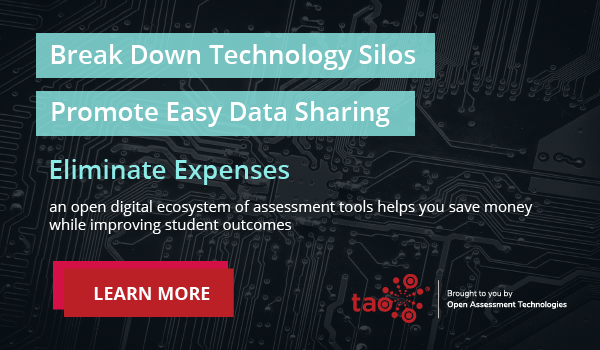This week we have the opportunity to sponsor Bett Brazil, the Latin America’s largest education and technology show, and give a deep dive into our open-source testing system.
During events like Bett Brazil where OAT showcases TAO as a leader in digital testing, we often receive questions about our product evolution. In light of these inquiries, we’d like to bring even more transparency to how we build our product roadmap and emphasize our focus on goals and adaptability to change.
The first step we take when building our product roadmap is to define our product goals clearly. This includes identifying what we want to achieve, why it is crucial, and how we plan to measure success. By focusing on goals instead of features, we can remain adaptable to the changing market needs and ensure that our product continues to evolve and meet the requirements of our diverse customer base.
We gather data from various sources to direct our goals and ensure that we are making informed decisions about the development of our testing technology:
- Inbound sales calls and RFP processes: These interactions help us understand how our product aligns with customer needs and assess the business value of addressing any gaps. Best practices in product management involve actively engaging with customers, conducting surveys, and gathering feedback to identify and prioritize user requirements.
- Internal stakeholder involvement: We involve stakeholders in goal-setting to capture their insights and feedback. By using cross-functional teams and fostering a collaborative environment, we can leverage diverse perspectives and expertise to create more informed and well-rounded goals.
- TAO User Group (TUG): This official channel allows customers to express their needs and explain their context, which we take into account when defining our goals. Product managers should actively engage with user groups and communities to gather valuable input and stay informed about evolving user needs.
- Competitor analysis: By monitoring our competitors and analyzing their offerings, we can identify potential areas for improvement and innovation in our testing technology. Regularly conducting competitive analysis helps product managers identify market gaps, anticipate competitor moves, and formulate strategies to maintain a competitive edge.
- Market trend analysis: Staying up-to-date on market trends and advancements in the assessment industry helps ensure that our goals align with the evolving market landscape. Product managers should participate in industry events, read industry publications, and connect with thought leaders to stay informed about emerging trends and best practices.
Once we have established our goals, we refine them by considering various data sources and adapting to the ever-changing market needs. This approach allows us to create a flexible product roadmap that is based on data-driven decision-making and focuses on delivering value to our customers.
We avoid creating long-term roadmaps as we understand the importance of embracing change and the inevitability of market fluctuations. By maintaining a short to medium-term focus, we can quickly respond to emerging trends and changing customer requirements.
Effective communication is essential for ensuring alignment and buy-in for our internal and external product roadmap. We have implemented several touchpoints to discuss and reinforce the roadmap:
- Involving main stakeholders in the early stages of the roadmap process.
- Prioritizing transparency by making product roadmaps available on our internal software development tool, JIRA.
- Updating the team on roadmap progress through regular meetings with main stakeholders and showcasing new features and functionalities every two weeks.
- Communicating release notes through an internal newsletter.
- Holding ad-hoc meetings for smaller audiences, such as sales and PMO, to explore new features and address questions.
Externally, we communicate our roadmaps through 1:1 customer meetings, where we present our short and medium-term vision to specific customers. We also share our roadmap during events like TAO Days, and our recently launched TAO User Group (TUG) plays a significant role in overseeing the advancement of the TAO roadmap.
By focusing on clearly defined goals, embracing change, and maintaining open lines of communication, we can build a product roadmap that not only drives the evolution of our product but also remains responsive to the changing needs of our customers.
Want to learn more about TAO? Let’s get in touch.


